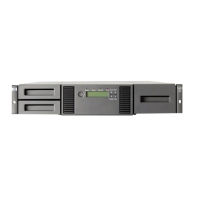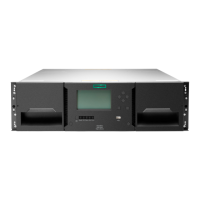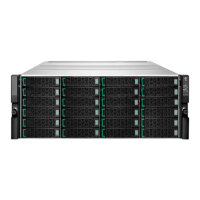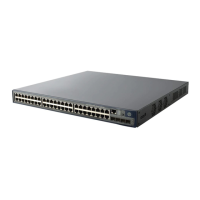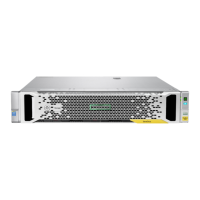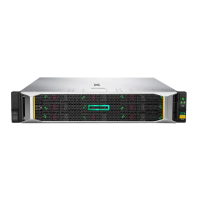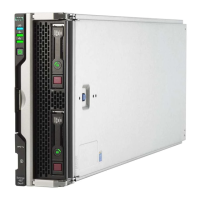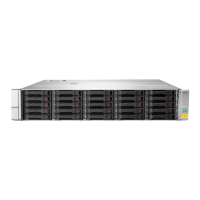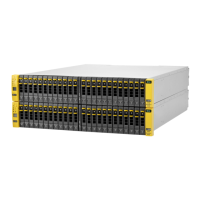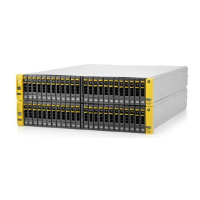Technical white paper Page 29
Snapshots and Remote Snap Licenses
To apply Snapshots and Remote Snap Licenses, follow these steps:
1. Select Home → Action → Install License. Enter the path and license file or browse to the license file and click Install License File to
add the updated license. The new license is needed only if you have upgraded to an MSA 1040 or 2040 storage system.
2. To configure the Snapshot schedules, select Volumes → Action → Manage Schedules. Verify the existing linear snapshot schedules.
3. When upgrading to a Fibre Channel based controller, verify inside the Fibre Channel switch management interface that the Fibre Channel
switch zoning configuration is updated with the new storage system port WWNs.
4. If upgrading to an iSCSI-based controller, re-establish iSCSI sessions from the hosts to the new storage system IQN.
5. For Remote Snap, if the management controllers cannot communicate with each other, you must set the remote replication secondary
Refer to the MSA Remote Snap Software technical
white paper for more information.
6. To complete the upgrade, power up all hosts connected to the storage system.
7. From the hosts, verify that the MSA volumes are accessible. This requires reconfiguring multipath if multipath was used before upgrading
and not updated before the upgrade.
You have now successfully upgraded to the MSA 1040 or HPE MSA 2040/2042.
VMware vSphere
Note
This section only applies when upgrading from the P2000 G3 MSA (TS250 firmware) to the MSA 1040/2040/2042 (GL200 and later
firmware).
Upgrading the MSA controllers changes the signature on the storage system, which causes the VMware ESX®/ESXi host to detect the LUN
as a snapshot. After the upgrade, you might experience missing datastores and virtual machines (VMs). You will need to add the missing
datastores and VMs back into the vSphere inventory using the re-signature process. For Raw Device Mapping (RDM) that is presented
directly to the VM from the MSA storage system, you will need to use CLI commands to manually import it.
Because MSA 1040 and MSA 2040 SAN storage systems are T10 compliant, there is no need for the VMware vSphere® Storage APIs
Array Integration (VAAI) Plug-in to be installed. If the ESX/ESXi server hosts both P2000 G3 MSA and MSA 1040/2040/2042 SAN storage
systems, HPE recommends that you uninstall the VAAI Plug-in, remove claimrules, and then re-install VAAI after the controller upgrade. This
ensures all claimrules are associated with the correct storage system.
Retrieving the disk information before upgrading the controllers
Follow these steps to add missing datastores and VMs and deactivate the VAAI Plug-in. Refer to the VMware documentation before
upgrading the controllers for specific details for the first two steps in this process:
1. In the app on the client, run the CLI vmkfstools command.
2. After vmkfstools is running, run the service console command esxcfg-scsidevs.
3. Before upgrading the controller, collect all disk information related to vSphere Virtual Machine File System (VMFS) and RDM files.
4. Make sure the VM data is properly backed up.
5. From the ESX/ESXi console, enter the vmkfstools -P command to query the VMFS file system and collect the disk information:
vmkfstools -P /vmfs/volumes/DATASTORE_NAME/VM_NAME/VM_NAME.vmdk
# UUID: 518421ec-a2b768ec-1eed-001cc468d0c4 Partitions spanned (on “lvm”):
# naa.600c0ff00011caddea9f835101000000:1
6. Save the VMFS disk information to a file.
7. Enter the vmkfstools -q command to query the RDM file system:
vmkfstools -q /vmfs/volumes/DATASTORE_NAME/VM_NAME/VM_NAME_RDM.vmdk
# Disk /vmfs/volumes/vmfs5/RDMVM/RDMVM.vmdk is a Non-pass through Raw Device
Mapping
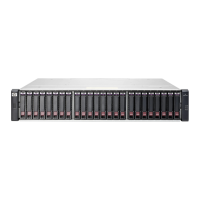
